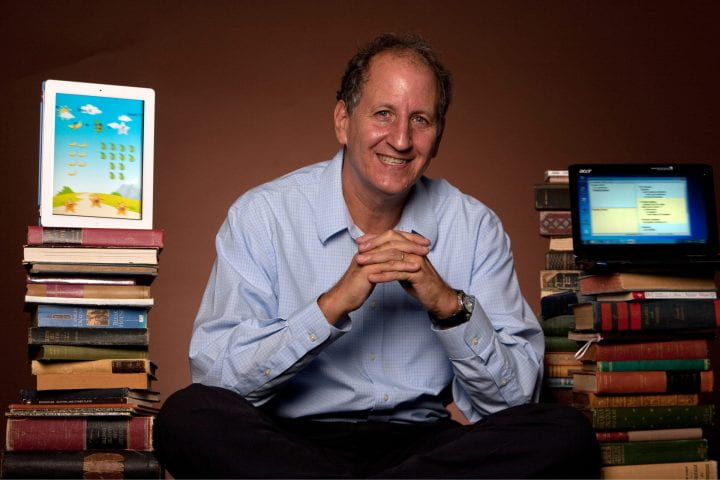The reality of ‘cloud’-based learning
Mark Warschauer’s book explores how digital media can transform schools.

A child in the slums of New Delhi stumbles upon an outdoor computer kiosk. Kids in Birmingham, Ala., receive one laptop each. Students in Littleton, Colo., complete writing assignments on classroom blogs. All are creative examples of what happens when technology is merged with education. But not all are successful.
Mark Warschauer, UC Irvine professor of education and informatics, studies the use of digital media in the classroom. He thinks technology can be a great educational instrument but cautions that a computer by itself is not transformative.
“The One Laptop per Child program is based on giving a child a computer and getting out of the way,” he says. “Its founder believes that children can teach not only themselves but also their family members, without regard to curriculum development or teacher training.”
According to Warschauer, the value of educational computing programs depends on Internet access, teacher training and curriculum development. Lack of supportive infrastructure can result in missed opportunities and costly lessons for all involved.
“Computers tend to have an amplifying effect,” he says. “They make good schools better but won’t make bad schools good.”
In 1999, computers were installed in kiosks in Indian slums so that children could teach themselves with technology. Organizers hailed the program, but what Warschauer found when he visited the city was more complicated.
Internet connections were faulty, he says, and children used the computers mainly to play simple games and draw. Community organizations that wanted to assist the youngsters were excluded, and parents he interviewed saw little value in the kiosks.
Again, mentorship and institutional support are important if children are to learn effectively with technology,” Warschauer says.
This was underscored in a trip he made to Birmingham, Ala., in 2009 – about 19 months after the launch of the One Laptop per Child program in the city. He learned that 70 percent of the laptops had suffered technical issues within the first six months and that more than 80 percent of recipients reported rarely or never using them at school.
“One student looked at me plaintively and asked if I could fix his computer,” Warschauer recalls.
While the Birmingham program didn’t meet expectations, schools across the U.S. are finding success by implementing digital technology in ways that better capitalize on its potential.
In many places, teachers are fostering writing skills by having students contribute book reviews online or publish their work on blogs and wikis.
In his new book, Learning in the Cloud, Warschauer describes a program at King Middle School in Maine that has thoughtfully integrated laptops into the classroom curriculum via interdisciplinary – often community-based – projects.
Examples include a student-produced book on the civil rights movement and collecting wind data with laptops to create windmill models and predict how much electricity they would generate. Such projects complement and reinforce lessons in literacy, math and science while teaching students valuable new research skills.
The King program’s effectiveness is reflected in students’ performance on state tests: In 2010, an average of 80 percent of eighth-graders scored proficient in math, and 78 percent were proficient in reading. Eighth-graders statewide, on average, scored just 69 and 59 percent proficient, respectively.
These results are remarkable in light of the school’s ethnically, linguistically and economically diverse student population, which includes a sizable number of African refugees who speak English as a second language.
“King’s success lies in how it has deployed the laptops in a highly innovative experiential learning program,” Warschauer says. “The school’s approach fully exploits what laptops can do in the classroom.”
In December, he’ll deliver a free webinar via UCI Extension on “How & Why to Transform Schools with Digital Media.” It’s based on the thousands of hours Warschauer and his team have spent observing classes and interviewing teachers in both successful and unsuccessful technology-rich schools, especially those that utilize laptops, netbooks and iPads.
Warschauer next will investigate the use of Google Apps for Education – and particularly Google Docs – in K-12 writing instruction. Researchers hope the study can aid in the design of an online writing environment that combines cloud-based tools with purposeful and collaborative interaction to help develop the thinking and writing skills needed for academic and professional success.

